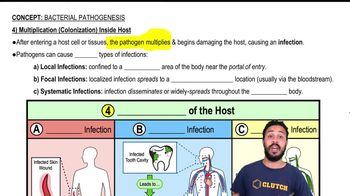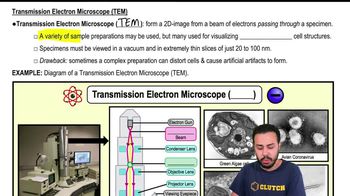All of the following can be transmitted by recreational (i.e., swimming) water sources except
a. amebic dysentery.
b. cholera.
c. giardiasis.
d. hepatitis B.
e. salmonellosis.
 Verified step by step guidance
Verified step by step guidance



All of the following can be transmitted by recreational (i.e., swimming) water sources except
a. amebic dysentery.
b. cholera.
c. giardiasis.
d. hepatitis B.
e. salmonellosis.
Use the following choices to answer questions 7–10:
a. Campylobacter
b. Cryptosporidium
c. Escherichia
d. Salmonella
e. Trichinella
This microbe is frequently transmitted to humans via raw eggs.
Complete the following table:
<IMAGE>
Isolation of E. coli from a stool sample is diagnostic proof that the patient has
a. cholera.
b. E. coli gastroenteritis.
c. salmonellosis.
d. typhoid fever.
e. none of the above
Gastric ulcers are caused by
a. stomach acid.
b. H. pylori.
c. spicy food.
d. acidic food.
e. stress.
Microscopic examination of a patient’s fecal culture shows comma-shaped bacteria. These bacteria require 2-4% NaCl to grow. The bacteria probably belong to the genus
a. Campylobacter.
b. Escherichia.
c. Salmonella.
d. Shigella.
e. Vibrio.